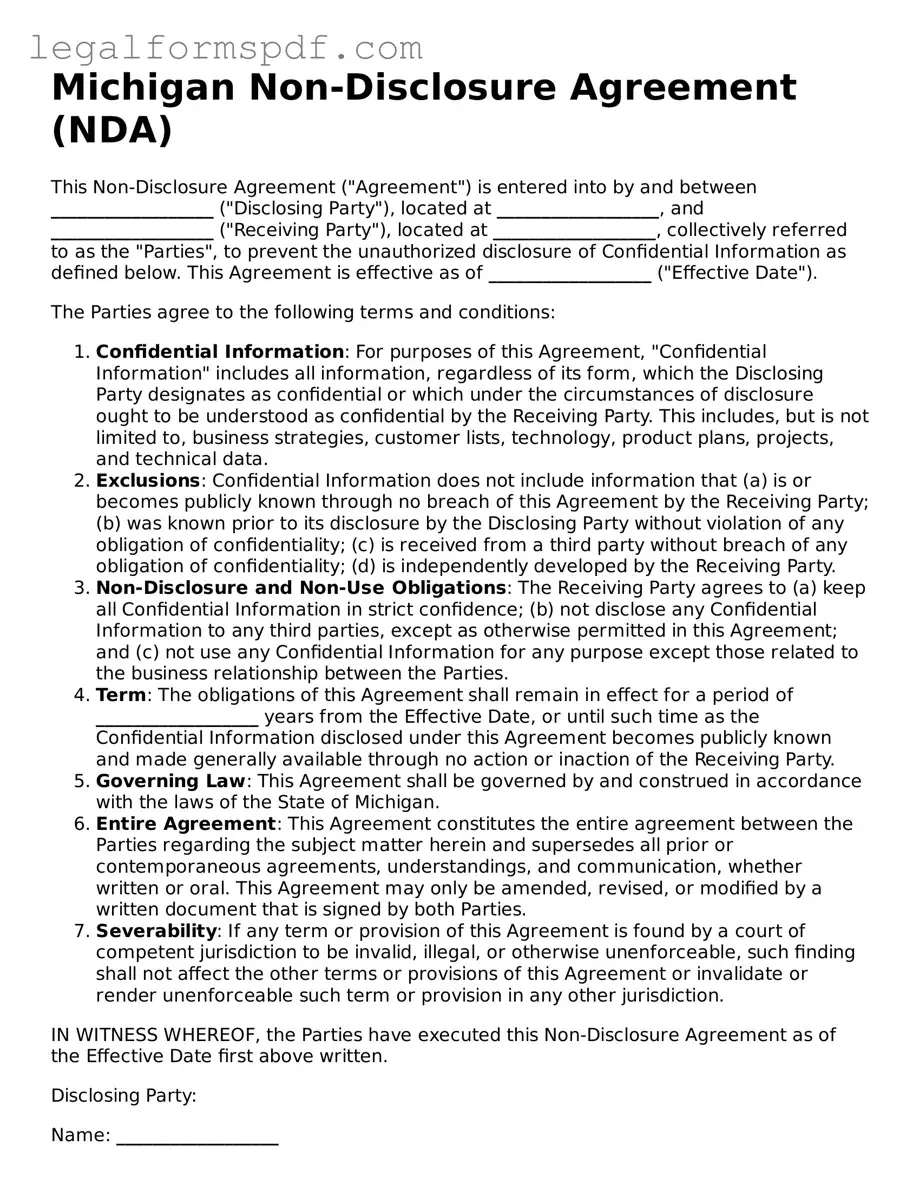What is a Michigan Non-disclosure Agreement (NDA)?
A Michigan Non-disclosure Agreement, also commonly referred to as an NDA, is a legally binding document through which one or more parties agree not to disclose confidential information shared between them. This type of agreement is used to protect sensitive information, trade secrets, or any proprietary knowledge that needs to be kept private. In Michigan, as in other states, an NDA can be tailored to meet the specific needs of the parties involved, ensuring that particular details, data, or information are not shared with unauthorized individuals or entities.
When should you use a Michigan NDA?
There are several circumstances under which using a Michigan NDA is advisable. Typically, it is used when entering into a business relationship where confidential information will be exchanged. This could be during negotiations, partnerships, investments, or when hiring new employees who will have access to sensitive company information. It's also common to use an NDA during the invention patent process or when sharing a business idea with potential partners, investors, or contractors to ensure that your proprietary information is safeguarded.
What information can be protected with a Michigan NDA?
With a Michigan Non-disclosure Agreement, a wide variety of information can be classified as confidential and, therefore, protected. This includes, but is not limited to, trade secrets, business plans, client lists, intellectual property, technical drawings, algorithms, marketing strategies, and financial information. It's important that the NDA clearly defines what constitutes confidential information for the purposes of the agreement to prevent any ambiguity regarding what is protected.
Are there any exceptions to what a Michigan NDA can protect?
Yes, there are certain exceptions to the types of information a Michigan NDA can protect. Generally, information that is already publicly available, known to the receiving party before the disclosure, or independently developed without access to the confidential information, cannot be protected by an NDA. Additionally, if the information is ordered to be disclosed by a court or government body, the NDA cannot prevent this disclosure. It's essential for an NDA to outline these exceptions clearly to ensure all parties understand what is not covered under the agreement.
